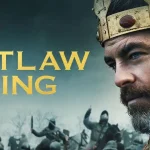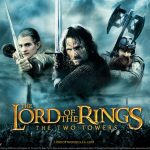MiG-15 vs. F4U-4 Corsair in Korean War 1950-1953

The next day, the squadron is informed that war has broken out between North and South Korea, and Leyte is redeploying to support the South. In November 1950, VF-32 arrives in Korea and learns that Chinese troops have entered the war on the North Korean side and begun to push American forces back. The squadron deploys to destroy a pair of bridges on the Yalu River between China and North Korea, though they are only permitted to fire on the Korean side of the border. Brown and Hudner fight off a MiG-15 fighter jet while the others attack the bridges, but one remains standing. While Hudner orders a retreat in the face of anti-air fire from the Chinese side of the river, Brown disobeys him and attacks the bridge solo, successfully crippling it.
The Vought F4U Corsair is an American fighter aircraft which saw service primarily in World War II and the Korean War. Designed and initially manufactured by Chance Vought, the Corsair was soon in great demand; additional production contracts were given to Goodyear, whose Corsairs were designated FG, and Brewster, designated F3A.
The Corsair was designed and operated as a carrier-based aircraft, and entered service in large numbers with the U.S. Navy in late 1944 and early 1945. It quickly became one of the most capable carrier-based fighter-bombers of World War II.[3] Some Japanese pilots regarded it as the most formidable American fighter of World War II and its naval aviators achieved an 11:1 kill ratio.[4][5] Early problems with carrier landings and logistics led to it being eclipsed as the dominant carrier-based fighter by the Grumman F6F Hellcat, powered by the same Double Wasp engine first flown on the Corsair’s initial prototype in 1940.[6] Instead, the Corsair’s early deployment was to land-based squadrons of the U.S. Marine Corps and U.S. Navy.[citation needed]

The Corsair served almost exclusively as a fighter-bomber throughout the Korean War and during the French colonial wars in Indochina and Algeria.[7] In addition to its use by the U.S. and British, the Corsair was also used by the Royal New Zealand Air Force, French Naval Aviation, and other air forces until the 1960s.
In early 1950, Lieutenant Tom Hudner transfers to Fighter Squadron 32 (VF-32) at Quonset Point Naval Air Station, where he meets Ensign Jesse Brown, the only African American member of the unit. Hudner integrates well into the squadron, which is assigned F4U-4 Corsairs – powerful planes with a reputation for fatal accidents if not handled properly. After Brown’s car breaks down, Hudner starts giving him rides and eventually meets his wife Daisy and their young daughter Pam. The Browns are doing well, but struggle with racist neighbors, and Brown has resorted to shouting racist abuse at himself in the mirror for motivation before missions.











